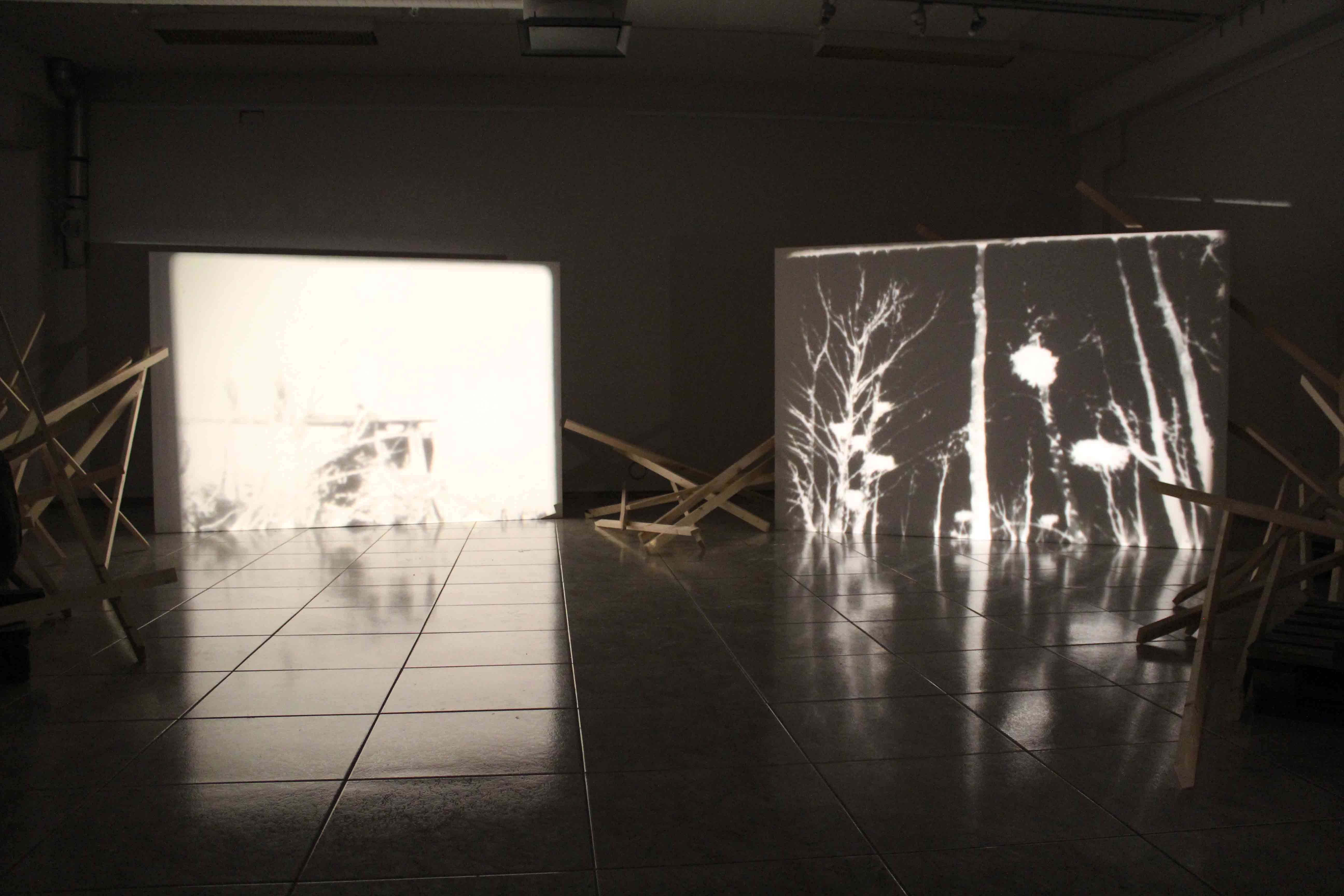BRITT AL-BUSULTAN
proposal for a future
razzle dazzle
great cormorant
tracing places
northern lights
one can see only..
punch&judy
|
NEWS
WORKS
BIO
CONTACT
great cormorant

|
film installation; 2 x 16mm projector, 16mm filmloops, wood, rocks, silver
6 min.
Migration is inherent to the human species and can in fact be traced back millions of years ago, when
homo sapiens spread from Africa into the rest of the world. Throughout history multiple waves of
mass migration can be found, making it a natural phenomenon.
Currently again there is a huge mobilisation going on in the world, with over 50 million people being
displaced. The predominant reaction of Europe is to close borders for outsiders, holding on to the
national identity and trying to minimize or even eradicate all that is different. ‘There are three main
steps to prejudice which happen within Europe. One is a categorization of what people deem to be
‘the other’, the second is stereotyping and the third is a judgment or effective priming done against
these communities, which increase the likelihood of attacks, the marginalization and alienation of
those communities’, states political and social commentator Mohamed Ansar.
The widespread intolerance towards minority groups within Europe is increasing. There has been a
hardening of attitudes towards particularly immigrants, asylum seekers, Muslims, Jews, women and
other minority groups. These attitudes have resulted in an unreasoned fear of all which is perceived to
be foreign or strange. An inflow of people from other cultures and religions is often perceived as a
threat to local Europeans.
The same attitude of xenophobia can be found towards the migration of exotic animals, who easily
are regarded as invasive. Viewed over millions of years, plants and animals are constantly shifting their
distributions of the earth. But nowadays conservationists suspiciously keep their eye on newcomers.
The first confirmed breeding in Finland of the great cormorant took place in 1996, when ten pairs
were nesting in the country. By the year 2009, the breeding population exploded to approx 16000
pairs. This trend has been followed with suspicion. Although the bird is a protected species the
suspicion seems to have turned into an unfuelled hatred for the bird. Citizens inititatives and letters to
local newspapers show this attitude of xenophobia focusing on the great cormorant.
The expansion of the great cormorant is now even regarded as a Europe-wide problem. Even though
this bird species is to be found on almost every continent, except Antarctica and South-America.
Whereas the term serious damage is not clearly defined and the conclusions of committees of
experts on the cormorant problem are fundamentally contradictory, the great cormorant represents
a major potential source of social conflict, as can be read in an official journal of the european union
(28.10.2010, C21 E/13). Coordinated action by all affected Member States and regions is called for.
The resemblance of the intolerance towards either human or ornithological migrants is striking.
These attitudes of xenophobia are the subject of artistic research. In this research the objective is to
open up a third space where the discourse about these attitudes can freely take place. The result is a multi-sensory installation consisting of sculpture and moving image, handprocessed 16mm film.
2016

video excerpt
|
|

installation views
|
|
Kindly supported by:
Arts Promotion Centre
Regional Arts Council
|
|
|
